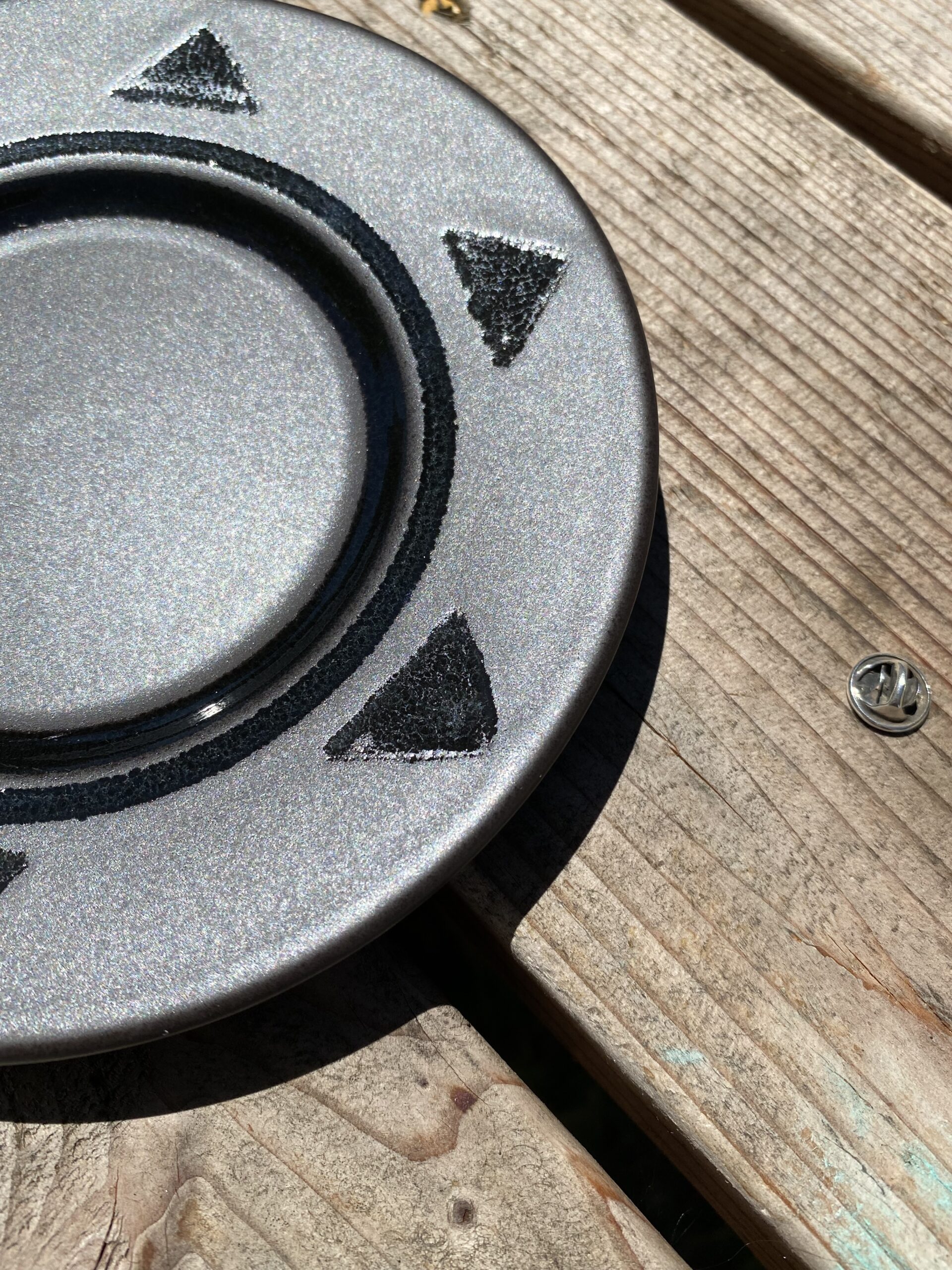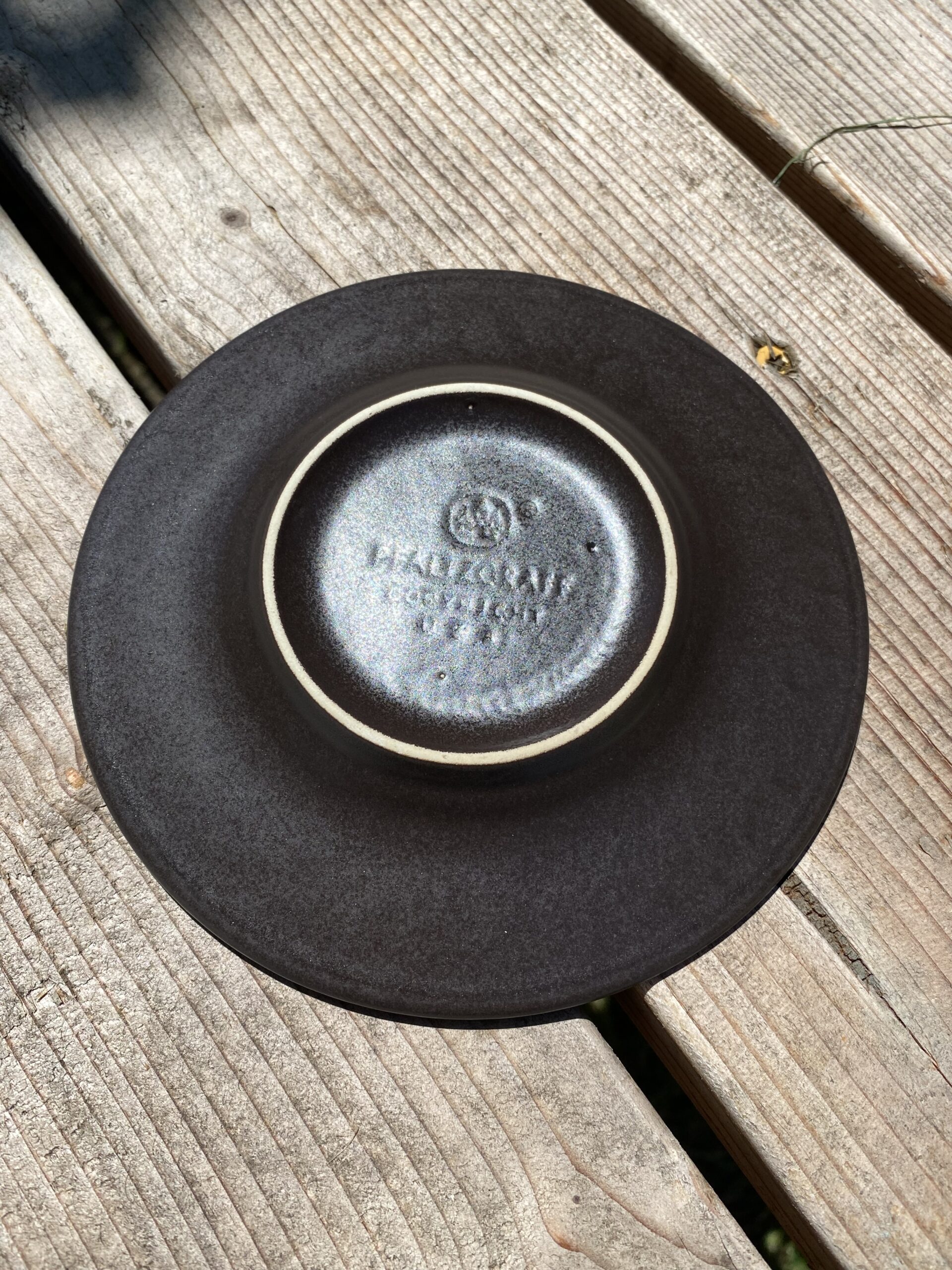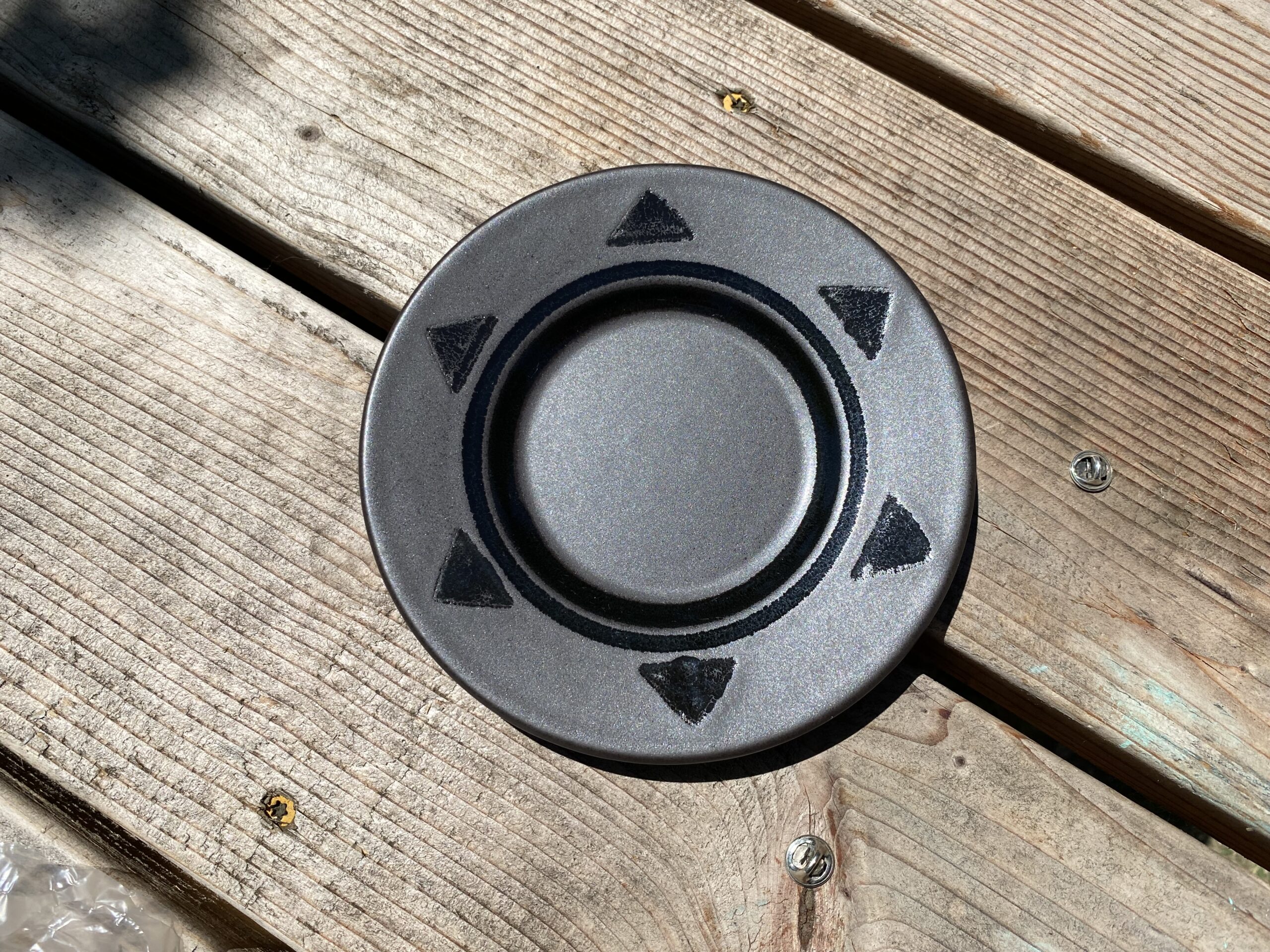XRF test results for black glazed Pfaltzgraff Midnight Sun pattern, “Made in USA” ceramic dish sent in by Kathryn in Seattle

For those new to this website:
Tamara Rubin is a multiple-Federal-award-winning independent advocate for childhood Lead-poisoning prevention and consumer goods safety, and a documentary filmmaker. She is also a mother of Lead-poisoned children (two of her sons were acutely Lead-poisoned in 2005). Since 2009, Tamara has been using XRF technology (a scientific method used by the U.S. Consumer Product Safety Commission) to test consumer goods for toxicants (specifically heavy metals — including Lead, Cadmium, Mercury, Antimony, and Arsenic). All test results reported on this website are science-based, accurate, and replicable. Items are tested multiple times to confirm the test results for each component tested. Tamara’s work was featured in Consumer Reports Magazine in February of 2023 (March 2023 print edition).
Published: July 14, 2023 — Friday
Below are the full XRF test results for the dish pictured above (additional photos below as well). These black glazed Midnight Sun patterned Pfaltzgraff dishes (Made in the USA) are safe by all standards, including standards for the total content of toxicants (specifically Cadmium and Lead) implemented for items intended for use by children. Any level under 90 ppm Lead in the glaze, paint, or coating on an item is considered safe for children by all standards related to consumer goods, and any reading under 40 ppm Cadmium is considered safe for children by all standards.
Reading #1) Center of Food Surface of Dish (matte black glaze)
100-second test (repeated multiple times to confirm results)
- Lead (Pb): 20 +/- 8 ppm (safe by all standards)
- Cadmium (Cd): non-detect / negative
- Tin (Sn): non-detect / negative
- Mercury (Hg): non-detect / negative
- Selenium (Se): non-detect / negative
- Barium (Ba): 97 +/- 26 ppm
- Arsenic (As): non-detect / negative
- Chromium (Cr): 9,644 +/- 415 ppm
- Antimony (Sb): non-detect / negative
- Nickel (Ni): 8,514 +/- 199 ppm
- Copper (Cu): 158 +/- 26 ppm
- Zinc (Zn): 134 +/- 16 ppm
- Manganese (Mn): 600 +/- 166 ppm
- Zirconium (Zr): 6,573 +/- 116 ppm
- Iron (Fe): 12,300 +/- 300 ppm
- Platinum (Pt): 95 +/- 25 ppm
- Cobalt (Co): 1,371 +/- 102 ppm
- Bismuth (Bi): 38 +/- 8 ppm
- Chlorine (Cl): non-detect / negative
- No other metals were detected in consumer goods mode.
Reading #2) Food surface of dish: shiny black glaze
100-second test (repeated multiple times to confirm results)
- Lead (Pb): 52 +/- 9 ppm
- Cadmium (Cd): non-detect / negative
- Tin (Sn): non-detect / negative
- Mercury (Hg): non-detect / negative
- Selenium (Se): non-detect / negative
- Barium (Ba): 72 +/- 28 ppm
- Arsenic (As): non-detect / negative
- Chromium (Cr): 11,400 +/- 400 ppm
- Antimony (Sb): non-detect / negative
- Nickel (Ni): 5,885 +/- 150 ppm
- Copper (Cu): 155 +/- 25 ppm
- Zinc (Zn): 22,200 +/- 400 ppm
- Manganese (Mn): non-detect / negative
- Zirconium (Zr): 5,218 +/- 98 ppm
- Iron (Fe): 12,100 +/- 300 ppm
- Platinum (Pt): 421 +/- 64 ppm
- Cobalt (Co): 9,803 +/- 233 ppm
- Bismuth (Bi): non-detect / negative
- Chlorine (Cl): non-detect / negative
- No other metals were detected in consumer goods mode.
Some additional reading that may be of interest
- More Pfaltzgraff pieces we have tested.
- An overview article about the concern for Lead in pottery/ceramics.
- The link to the “Menu” of this website.
~ End ~


Never Miss an Important Article Again!
Join our Email List










